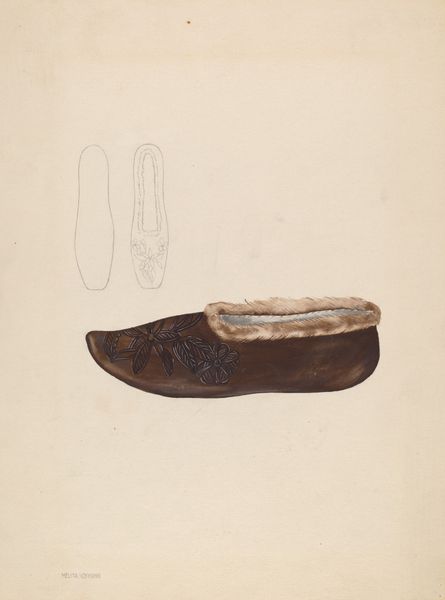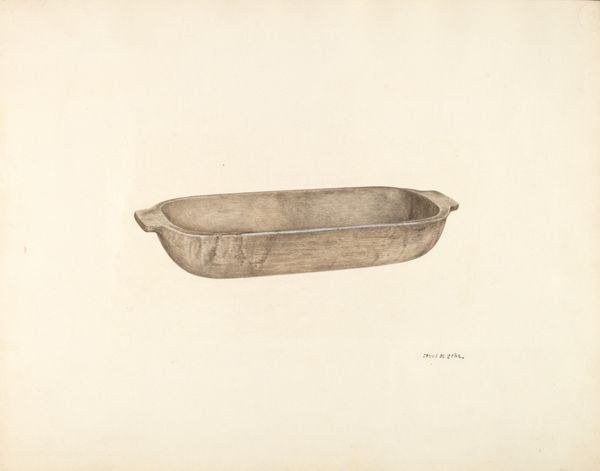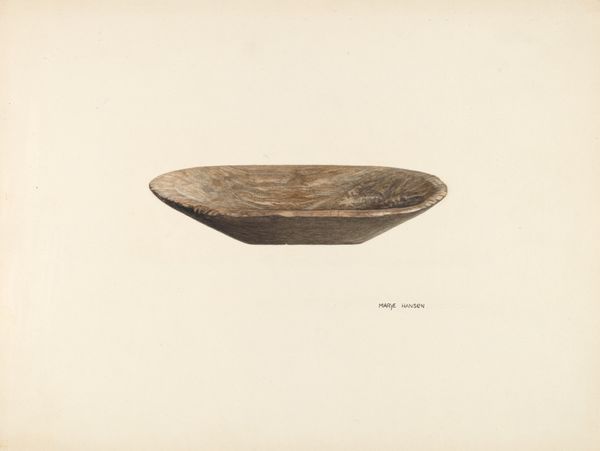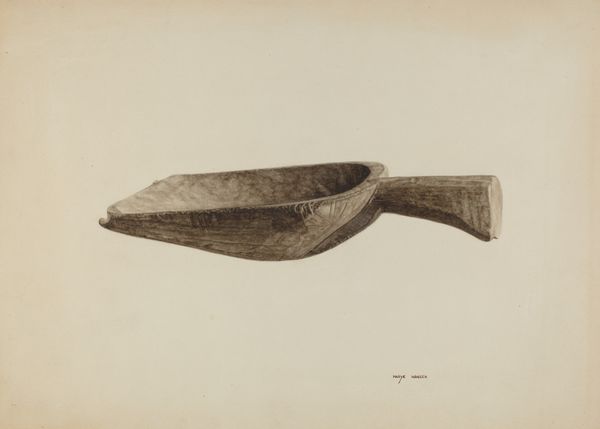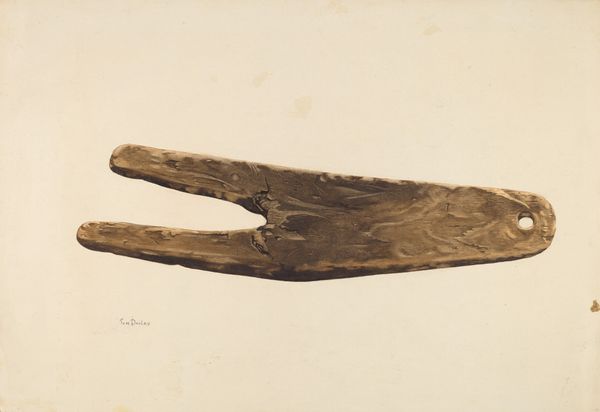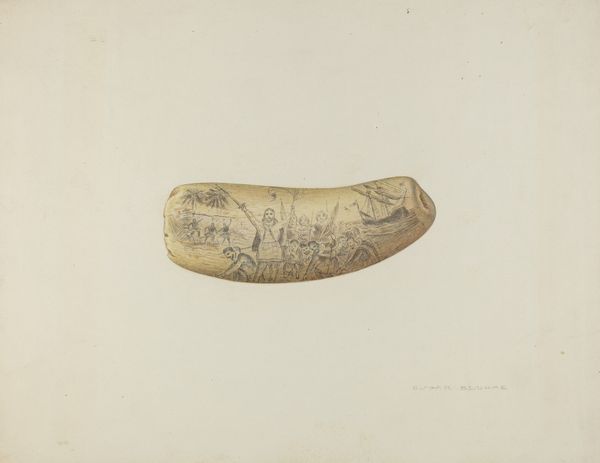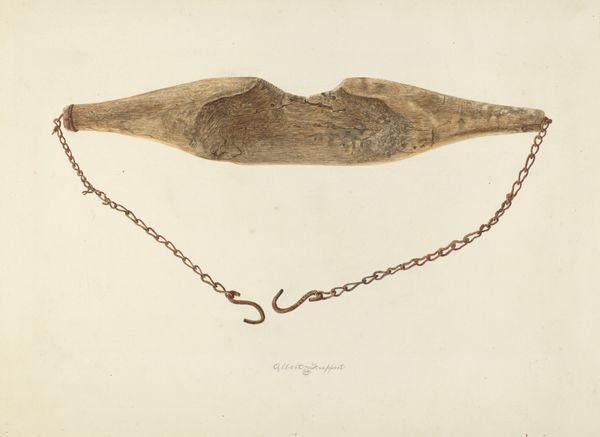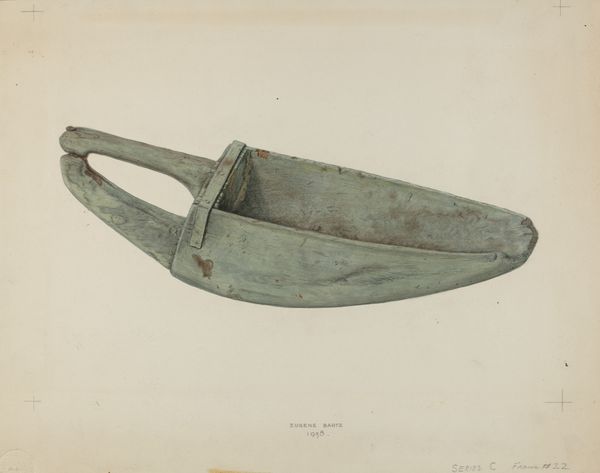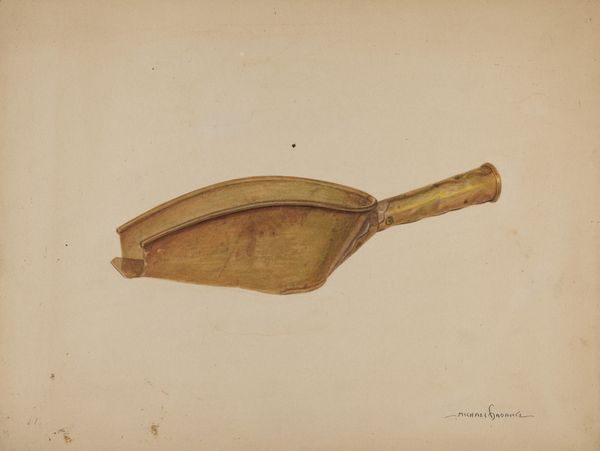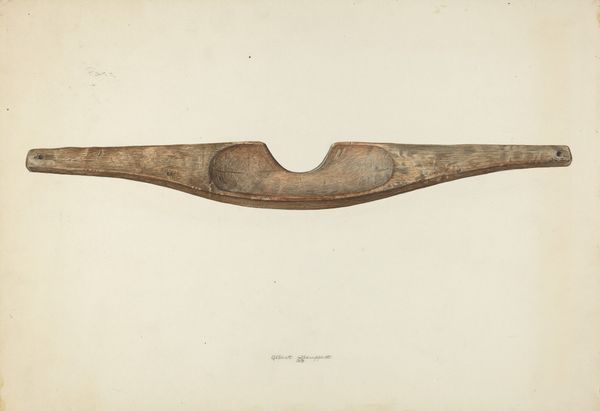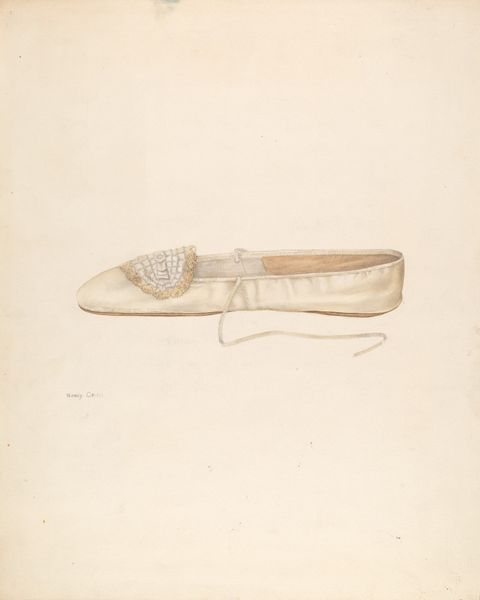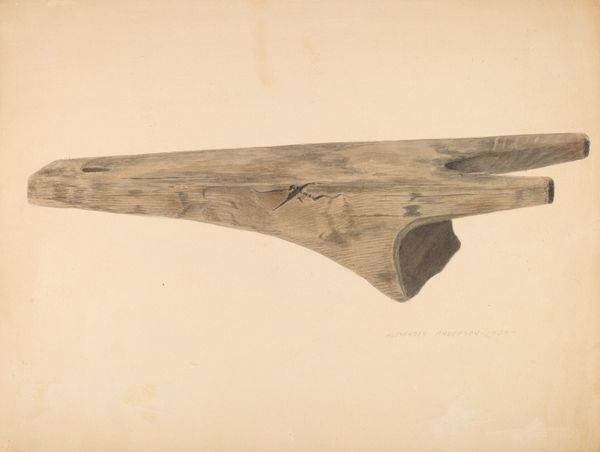
drawing, paper, watercolor
#
drawing
#
paper
#
watercolor
#
watercolour illustration
#
watercolor
#
realism
Dimensions: overall: 28 x 35.7 cm (11 x 14 1/16 in.) Original IAD Object: 20 1/8" long; 9" wide; 3 1/2" deep
Copyright: National Gallery of Art: CC0 1.0
Curator: This serene piece is titled "Butter Tub," crafted by Edward Unger around 1939. He employed watercolor and drawing techniques on paper to create it. Editor: It evokes a peculiar stillness. The wood grain seems aged and hushed, but also like it’s about to tell a story. I see years of use etched into its surface. Curator: Unger had an eye for the commonplace, elevating everyday objects. In the 1930s, this kind of utilitarian object symbolized a connection to a simpler rural life. The country was still feeling the pains of the Depression, which could trigger these kinds of aesthetic sentiments. Editor: Exactly, these are tools to keep going, the everyday icons. Do you see any symbolism in the container, perhaps reflecting something about containing emotions or perhaps about communal existence, you know like serving the food? Curator: I like your thinking. This vessel certainly becomes more than just something for butter. It represents sustenance, memory, perhaps even the immigrant experience holding a cultural history as people brought family recipes and customs to America. Editor: I am thinking if such tubs were central objects around which communal experiences evolved, ones laden with significance that extended beyond pure functionality? I imagine such tub represented so much to those using it daily, the heart of the family routine in that moment in history. Curator: That makes me consider the public role of art like this during times of transition. Maybe Unger wanted to acknowledge those lives and routines, to validate these often unseen communities with the quiet dignity found here. Editor: A potent message. Unger provides such a grounded counter-narrative that celebrates simplicity, resilience, and an enduring culture rooted deep within an honest day's toil. Curator: Precisely. We are drawn into an unassuming portrayal. The composition, however basic it looks, allows us to focus on the tangible history. We, perhaps, find a hidden beauty or a lasting legacy from the artist, from the people portrayed, and ultimately from our very own past.
Comments
No comments
Be the first to comment and join the conversation on the ultimate creative platform.

